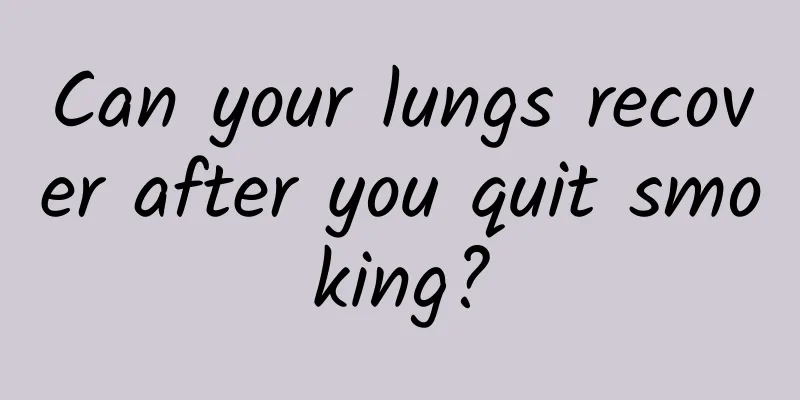What's the matter with the red spots on the one-year-old baby

|
If a baby over one year old has red spots on his body, you should pay attention to it. There are many reasons for these red spots, such as heat rash. If the weather is hot and the child is wearing more clothes, the body heat cannot be dissipated quickly. Of course, it may also be due to eczema. The baby has poor immunity and is easily affected by eczema. It may also be caused by measles or roseola. What's the matter with the red spots on the one-year-old baby 1. Prickly heat It is the hot summer, and the temperature in some cities has already soared to 35 degrees +, so some babies have developed prickly heat. Prickly heat is a superficial inflammatory reaction caused by blockage of the sweat gland duct openings and rupture of the sweat ducts due to sweat retention, and usually occurs in batches. Common locations include armpits, neck, chest, back, baby's head and face, etc. When babies get prickly heat, besides the "little red spots", the biggest characteristic is itching. So the solution includes changing into cotton clothing frequently, cleaning the skin and applying calamine lotion externally. 2. Eczema Many mothers cannot distinguish between prickly heat and eczema, especially in summer. Eczema, also known as milk rash, is not limited to appearing in summer. There are many causes of eczema, such as eating beef, mutton, seafood, eggs and milk; contact with or inhalation of pollen, dust mites, etc.; sunlight, dryness, heat, etc.; contact with soaps and lotions that irritate the skin. 3. Measles The four types of "red dots" introduced next are all caused by viruses, the difference lies in the different types of viruses. Measles is a highly contagious disease caused by the measles virus. The disease begins about 6-21 days after infection with the measles virus. Symptoms of upper respiratory tract infection appear in the first 3-5 days, with a high fever of around 39-40 degrees. A 0.5-1mm needle-tip-sized white internal rash appears on the cheek mucosa opposite the first molar in the mouth, which disappears after 2-3 days. Next, a red rash appears behind the ears, gradually spreading to the forehead, face, and neck, and then to the chest, abdomen, and back, and after 2-3 days, it spreads throughout the body. The red dots are 2-5mm in diameter, fade when pressed, and are sparsely and clearly distributed. When the rash is at its peak and the poisoning is severe, the body temperature can reach 40 degrees. Infants and young children are more likely to suffer from bacterial infections than adults. The body temperature will drop 1-2 days after the peak, and the red spots will disappear in the order of the rash after 2-3 days. The whole course of the disease is about 10-14 days. 4. Roseola (Rose rash) Roseola, also known as roseola infantum, is common in infants under 2 years old, most common within 6 months old, and more common in spring and autumn. Roseola is transmitted through saliva droplets, and the pathogen is human herpes virus type 6. The incubation period is 7-14 days. High fever occurs at the beginning of the disease, and rash appears 9-12 hours after the fever subsides 3-4 days later. It mainly spreads to the trunk, neck, and upper limbs, and the cold symptoms are not obvious. The rash disappears after 1-2 days without leaving any marks or peeling. 5. Rubella Rubella is a common acute infectious disease caused by rubella virus. It often occurs in children under 5 years old, accompanied by symptoms such as fever, headache, sore throat and runny nose. Rubella symptoms occur before and after fever. There are usually no obvious symptoms before fever, but rash appears 1-2 days after fever. The rash first appears on the face and neck, and spreads over the trunk and limbs within 24 hours, but there is no rash on the palms and soles. The rash condition is between measles and scarlet fever. After the rash subsides, lymphadenopathy persists for a long time. Only a small number of patients suffer from complications such as otitis media, pharyngitis, bronchitis, pneumonia and myocarditis. |
<<: Is drinking dandelion water useful for tonsillitis?
>>: What is the cause of the red spot on the upper jaw?
Recommend
What causes hoarseness of voice?
In daily life, many people have experienced the si...
If you touch these parts of the human body, something bad will happen.
The human body is very fragile and one careless m...
Keep yourself healthy in summer
The ancient Chinese medicine book "Inner Can...
What should I do if there is a tumor in the bile duct?
The normal bile duct in the human body is likely ...
How long can I use the erosion suppository after abortion?
Xiaomi suppositories are commonly used gynecologi...
How to treat acne caused by Yin deficiency and hyperactivity of fire
Yin deficiency and hyperactivity of fire is a dis...
What are the signs of malignant transformation of osteochondroma?
Osteochondroma is generally divided into solitary...
Can a stiff neck cause dizziness and nausea?
After getting a stiff neck, not only will your ne...
How long after giving birth can I drink pig's trotter soup
Pregnant women need to stay healthy and active af...
When is the best time to take Zhibai Dihuang Wan?
Zhibai Dihuang Wan is also a Chinese patent medic...
How to make buns soft and fluffy
If you want to make the buns looser and softer, t...
Swollen tonsils
Enlarged tonsils are an abnormal disease phenomen...
What are the symptoms of cerebral hemorrhage?
The occurrence of cerebral hemorrhage can pose a ...
Lump in earlobe
Many friends will suddenly find lumps in their ea...
What to do if the red spots on the soles of feet are hidden in the skin
Red spots and itching appear on the soles of the ...









